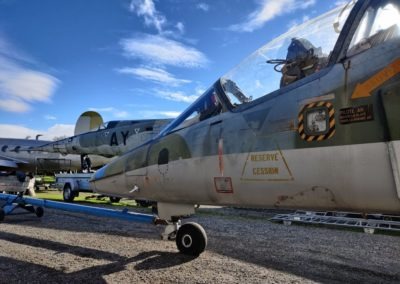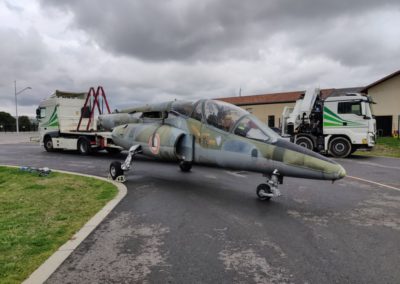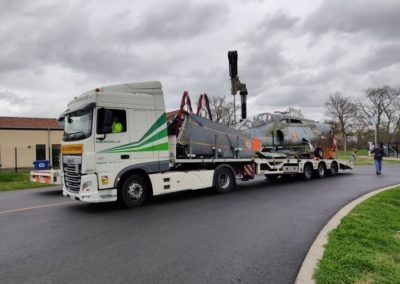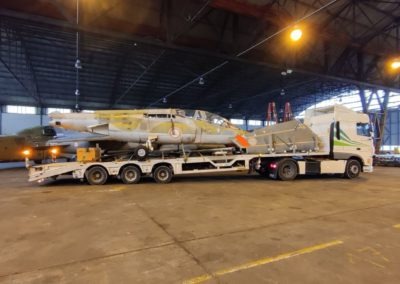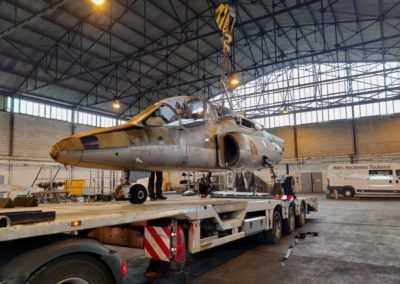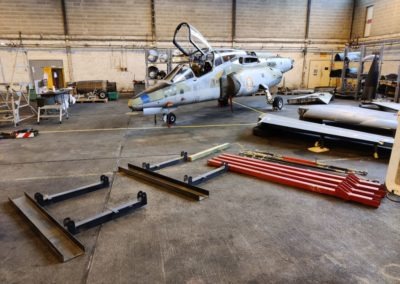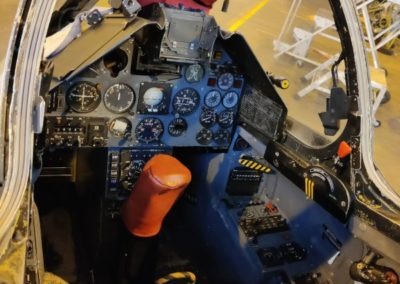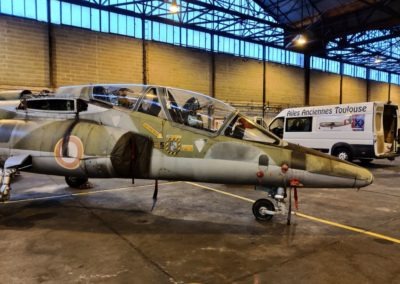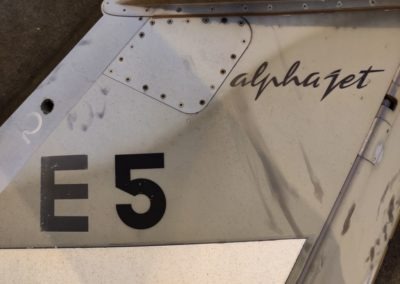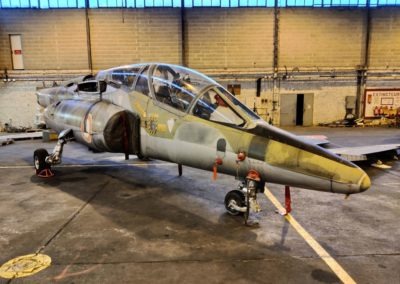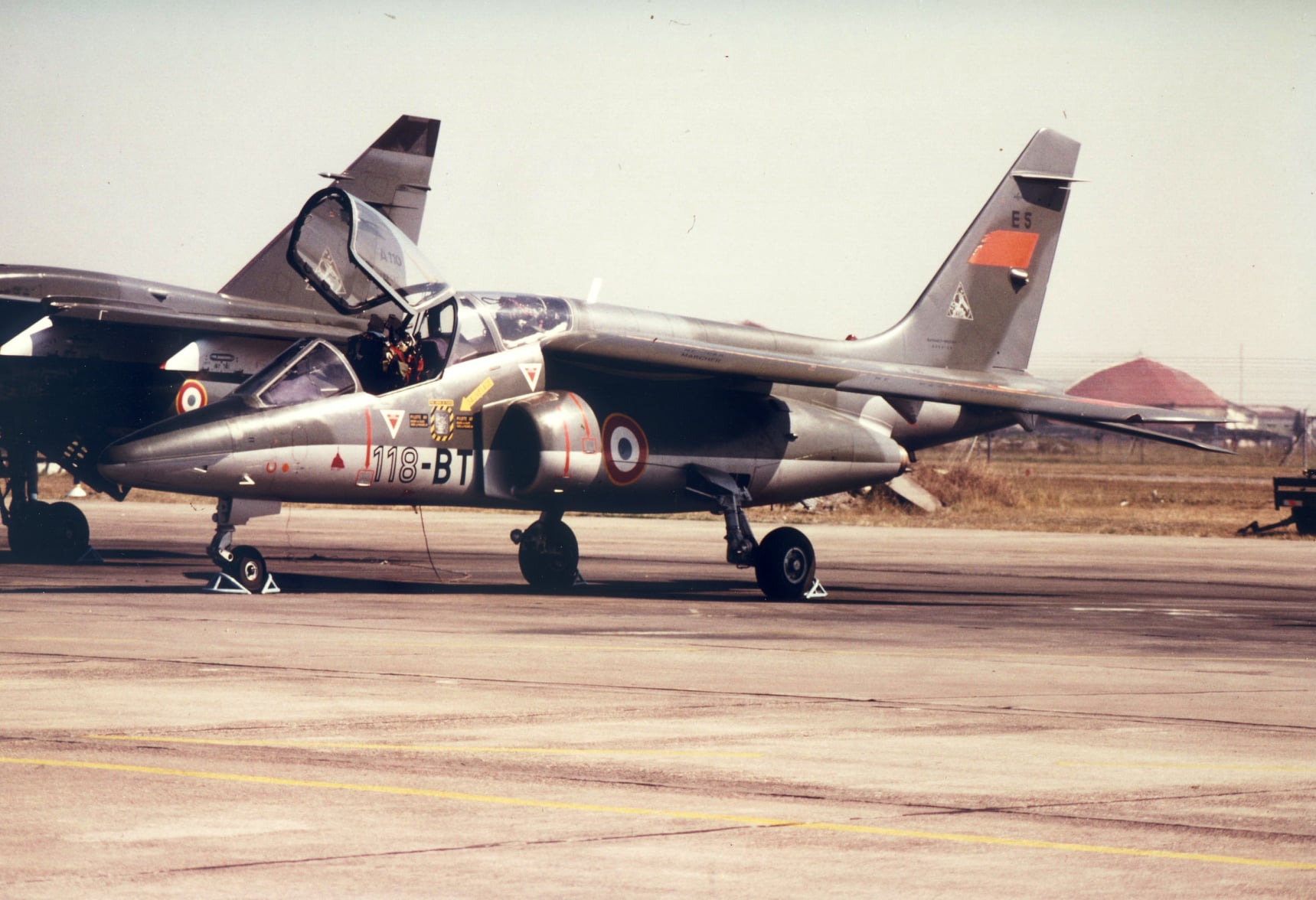Dassault / Dornier Alpha Jet E
History
In 1965, the German and French air forces sought to replace their Lockheed T-33 and Potez/Aérospatiale Fouga Magister. This need led to a joint request for proposals for a subsonic training and attack aircraft for both air forces.
The companies Breguet, later acquired by Dassault, and Dornier then joined forces to propose the TA 501 (for Training & Attack), which was based on the concepts of the French Breguet 126 and the German Dornier P.375.
On July 23, 1970, the contract was awarded to the alliance, and the aircraft was given its final name: the Alpha Jet. It was produced in two versions: the A version for attack, recognizable by its pointed nose, for Germany, and the E version for France with a rounded nose that enhances stability.
On October 26, 1973, the Alpha Jet prototype 01 made its first flight in Istres at the hands of test pilot Jean-Marie Saget. The first production aircraft, the E1, made its maiden flight on November 4, 1977.
The aircraft was developed in several versions:
- The E version for training
- The A version for attack
- The MS1 and MS2 attack versions with improved avionics for Egypt
- The E+ training version with improved avionics
In total, no fewer than 512 units were built, and 12 of them have equipped the famous Patrouille de France since 1981.
Most of the 500 aircraft produced were manufactured in one of the buildings of the Dassault-Breguet plant in Colomiers (where the Ailes Anciennes were housed for several years). This plant was integrated into the Aerospatiale site, then Airbus in the early 1990s.
As part of this cooperative program, the manufacture of Alpha Jet sub-assemblies was divided between France (Dassault-Breguet), Germany (Dornier), and Belgium (SABCA), with each country handling the final assembly of the aircraft in their respective facilities.
Contrary to what one might think, no component was manufactured “in duplicate”: Dassault-Breguet produced the front and central parts of the fuselage, Dornier the wings, the tail fin, and the rear fuselage. As for SABCA, it was responsible for the nose tip and the flaps.
Dassault-Breguet was therefore in charge of the most important of the three assembly lines for this twin-jet. Located in Colomiers, near Toulouse, it maintained a production rate of 13 aircraft per month in the early 1980s (maximum 15!) to meet the needs of the French Air Force and export customers. Dornier’s assembly line had an average rate of 6 aircraft per month. In total, 4,500 people were employed in the manufacture of Alpha Jets in both France and Germany (these figures include equipment manufacturers and subcontractors).
It should be noted that Egypt assembled its own aircraft in its Helwan plant (MS2 version).
Characteristics
| Wingspan | 9.16 m |
| Length | 11.85 m |
| Height | 4.19 m |
| Empty weight | 3,345 kg |
| Maximum weight | 7,250 kg |
| Maximum speed | 1,062 km/h (Mach 0.86) |
| Crew | 2 |
| Powerplant | 2 Snecma-Turbomeca Larzac 04C6 engines |
| Serial number | E5 |
Our Aircraft
The E5 is therefore part of the first batch of French production. It made its first flight on November 30, 1978, and its acceptance flight on January 11, 1979. As with all new aircraft entering service, the first examples were entrusted to the CEAM in Mont-de-Marsan, whose “Alpha Jet brand team” was tasked with evaluating the type, establishing its operational domain, drafting the documentation, training the first pilots, etc. The E1 was delivered to the CEAM on May 19, 1978, and the next four (E2 to E5) followed between June 1978 and January 1979.
It was taken into account in January 1979 by the CEAM, which assigned it the code 118-BT, like the first 4 production aircraft. At that time, the CEAM also had the mission of training Belgian and Moroccan pilots. It is therefore highly likely that trainees from these two countries also flew the E5.
It then briefly left the CEAM in October for Tours, where it was detached to replace an aircraft used for smoke pod tests; it was then given the code 314-LI but quickly returned to Mont-de-Marsan, this time with the code 118-BU. In October 1987, still at the CEAM, its code became 330-BU, following a reorganization of the CEAM which took the mechanographic designation “CEAM 330”, with its fighter squadron EC 24/330 to which the Alpha Jets and all the fighters were attached. It then became 330-BT, still at the CEAM.
In the early 1990s, it finally left Mont-de-Marsan for the 8th Fighter Wing in Cazaux, whose two squadrons (EC 1/8 Nice and EC 2/8 Saintonge) had begun their transition to the Alpha Jet in January 1982 (they had previously flown Mystère IVA). It was given the code 8-NS within the 1/8 Nice.
In April 1991, shortly after its arrival in Cazaux, the E5 was assigned to one of the bomber squadrons, EB 2/91 Bretagne, which flew Mirage IVP. The purpose of this assignment was to allow the continued training of Mirage IV pilots at a lower cost and to carry out liaison missions, following the withdrawal of the Mirage IIIE from the FAS. It then received the “Bretagne” insignia on its tail. Few Alpha Jets had this privilege… It left Bretagne on July 6, 1992, replaced by another aircraft.
In May 1997, it changed regions following its assignment to the 2/7 Argonne fighter squadron, based in Saint-Dizier with its Jaguars. Indeed, since 1995, the General Staff had decided to assign a few Alpha Jets on an experimental basis to a squadron of the Tactical Air Force. Our E5 received the code 7-PE, and its tail was repainted with the insignias of the two flights of the 2/7, the rooster and the Greek archer.
In 1999, the two-tone camouflage began to gradually disappear to make way for the new uniform “gray”, but the E5 was spared.
The 2/7 was disbanded in June 2001, and the E5 then joined the GE 314 in Tours, the Fighter School, where it continued its career with the code 314-LV.
It was definitively decommissioned in February 2012 after accumulating 5,477 hours and 55 minutes of flight time, and then stored.
In summary, its successive codes were:
| Code | Assignment |
| 118-BT | CEAM |
| 314-LI | GE 314 |
| 118-BU | CEAM |
| 330-BU | CEAM |
| 330-BT | CEAM |
| 8-NS | EC 2/8 Nice |
| 7-PE | EC 2/7 Argonne |
| 314-LV | EAC 314 |
The aircraft was recovered on February 10, 2021, after being previously disassembled by the maintenance, repair, and storage group for aircraft (GERSA) stationed in Châteaudun.
Photos of E5 in Service
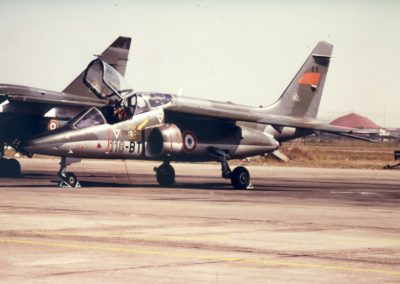
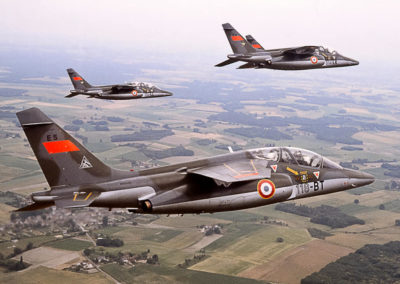
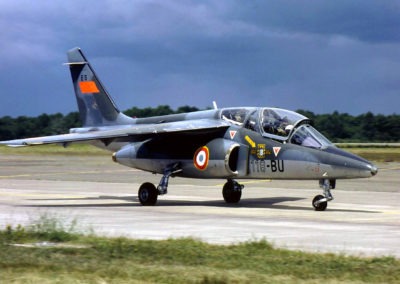

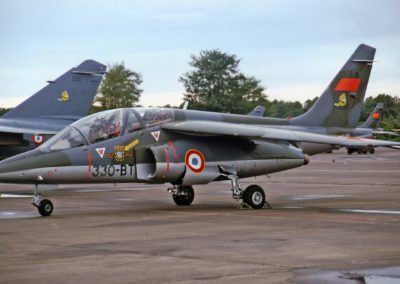
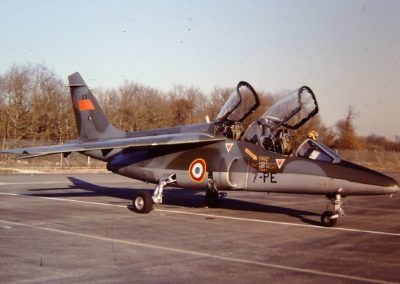
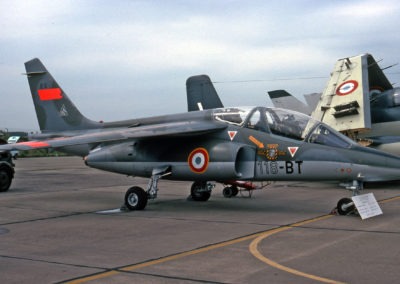
Recovery Photos
